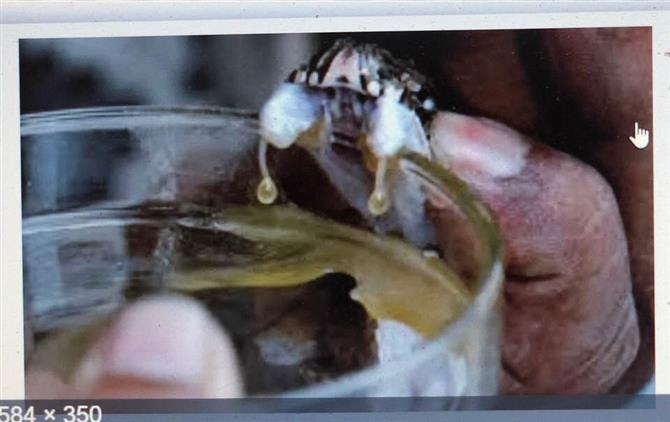Today is International Snake Day. This micro blog talks about poisonous snakes and extraction of snake venom. (See above pic with micro blog where venom is being extracted manually in a glass jar) Snake venom is used in medicines-Allopathy and Ayurveda-as well. Today is International Snakes Day. I found it interesting topic for my micro blog. I hope my followers waiting for the new bog would like it and appreciate it. How many of us know that about 45,000 people die of snakes bite every year in India.
Snakebite is a poor man’s disease and is fully recoverable/treatable. If there is fully functional hospital within 5 KM radius is available Each health centre is supposed to keep 10 vials of antivenin. Though there is enough antivenin in the country but distribution is uneven.
In India, the snake bite victims instead of going to hospital for treatments, go to quacks or illiterate healers in the rural areas. Some people even take their snakebite victim to quacks. If the bite is from non-poisonous snake, the quack zaddu-toona or his dhoolarr, provides relief, otherwise the snakebite victim dies sooner than later.

manually Extraction of Snake venom in glass jar
Only nearly 30-40 per cent snakebite are by venomous snakes in India. Though there are thousands of snakes varieties in India but only big four-Indian Cobra, the common krait, Russell’s viper and the saw-scaled viper. Many snakes are not poisonous and have only dry bites. According to World Health Organisation (WHO), snakebites claim more than 100000 lives worldwide every year. India faces 45,000 snakebites every year, finds the 2011 ‘Million Death Study’.
The minister of states a and Family Welfare, Ashwani Choubey, disclosed the death figures as low as -689 deaths only in 2018. May 23, WHO launched a new programme-‘snakebite Envenoming: A Strategy for Prevention and Control- the main idea of this programme is to bring down the number of snakebites deaths and casualties by 50 % before 2030. In 2027, WHO included snakebites in the list of ‘Neglected Tropical Diseases’ to improve research and funding, and to draw the attention of policy-makers to this silent killer.